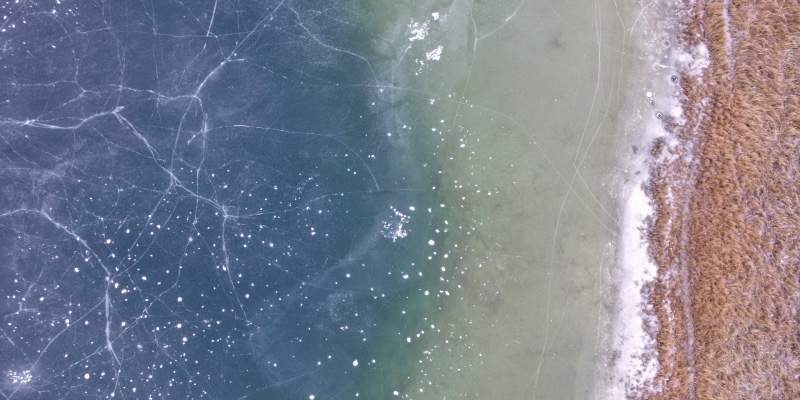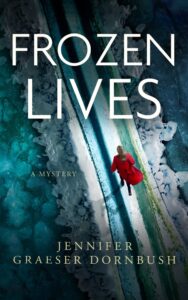I was steeped in forensic science before I learned how to read or ride a bike. My younger sister and I did our first “case” with dad, the county medical examiner, when we were six and eight. It was a twin engine airplane crash at our small, regional airport. We collected pieces of brain and skull from the victims. In the moment, this was simply an anatomy lesson and nothing more.
Over the next 20 years, I had a hands-on, front row seat to countless investigative adventures and forensic lessons. My father was the medical examiner, and my mother was the office manager for the coroner’s office of three northern Michigan counties. These were rural counties that had no budget for an official M.E. office, so it was established in our home. This also allowed my father to keep a tight chain of custody.
It doesn’t take a psychologist to connect the pieces of my forensic childhood to my current crime writing career. With forensics woven into my DNA, my plots are driven by this inner scientist. And as a crime fiction fan, I know I’m not alone when I say that we read them in part for the juicy details in the forensic puzzle. In fact, during the initial edits of my new release, Frozen Lives, my editor gave me a note advising me to add another body drop and more of the gory forensic stuff. That was not a problem! Here are a few forensic tidbits you can look forward to in my new release, Frozen Lives and the science behind the fiction. Don’t worry. No spoilers!
What does happen to a body if it’s been frozen? As its title suggests, the investigators in Frozen Lives, do encounter a frozen body or two. This brings up a complicated issue for a medical examiner in terms of decomposition and what it can tell you about a person’s demise. Weather, temperature, insects, maggots, body composition— all of this affects how quickly a body breaks itself down. In frozen bodies, there is a phenomenon called freezer artifact. Tiny bubbles form inside the cells as the body de-thaws. Thus, proving that it had once been frozen (if that wasn’t known ahead of time). A body rots very quickly after the de-thawing process begins, much like the way frozen fruit turns brown and mushy once it’s taken out of the freezer.
What happens to a person when they’ve been shot at close range? There is a close-range shooting that occurs in Frozen Lives. (Not a spoiler given the fact that there’s almost always a shooting in every crime fiction book!) What happens to a body when it’s shot really depends on the type of ammunition and gun used. In the case of Frozen Lives, a small semi-automatic handgun is used. This means the shooter uses a magazine to load a round of ammunition, so they don’t have to reload a bullet each time they want to shoot. In the book I don’t specify the type of ammo use, but let’s say it was hollow point bullet. A hollow point bullet is pointed on the tip and has a hollowed-out middle. When the bullet hits its target, the metal material blooms out like flower petals and causes more damage to the target as it rips through flesh, than say, a jacketed bullet which is non-expanding as it hits a target and leaves a small hole.
As for the actual crime scene where a shooting is involved, there are many steps and things to look for. Investigators would try to recover the bullet casings either from the scene or from the body. If it’s from the body, the medical examiner will be able to find that piece of evidence during the post-mortem exam. The investigator would also try to determine the trajectory of the bullet, meaning where the shooter was standing and how far away from the victim. This can often be determined by blood spatter pattern. Spatter (not splatter) happens when the blood leaves the body as a sphere and travels through the air being pulled down by gravity, forming a tear drop shape. It stays in this shape until impact. Then it forms a pattern with a body and a tail. The tail is actually the front of the blood spot and points back to the parent drop. An investigator would also want to search any potential suspect for back spatter, which is the blood from the victim that sprays at the shooter, covering hands, face, clothes, gun.
In the case of Frozen Lives, with a close-range shooting, blood spatter from a gunshot is high velocity and forms a misting pattern. Think of it like when you use spray paint. The diameter of each drop of blood is less than 1mm.
How does one prove a drug overdose death? There is a drug overdose death in Frozen Lives and it happens in a place where hundreds of drugs are kept and administered legally. A hospital. This can make it tricky to determine if it was a drug overdose and what drug caused it. There are many things about a victim’s exterior presentation that might indicate an overdose death, including a body slumped over, respiratory failure, vomit present, low body temp, purple lips, blue fingertips, and clammy skin.
Scientifically, one of the best ways to corroborate a drug overdose is through blood sample. Unlike what you see on TV, when a sample goes to toxicology, the real-life lab run a typical drug panel on that sample, unless other drug(s) are requested by name. In the case of Frozen Lives, the M.E. would need the toxicologist to know what medications the patient was on, if any. And if there were any other drugs present at the time of death. A good investigator will search the premises of the descendent to see if other drugs were present. In Frozen Lives, this is exactly what happens thanks to our savvy heroine, Dr. Emily Hartford M.E. who checks the bio-waste container next to the hospital bed. I won’t spoil what she found.
One common misconception about drug investigations is that you need to procure a search warrant to search for the drugs. One such case where this is not required is if there are exigent circumstances, meaning there is reasonable cause that a life or evidence needs saving. Another circumstance is called a protective sweep. An investigator may conduct a search for and confiscate drugs if there is reasonable proof and danger that criminal activity is occurring.
There are a lot more juicy forensic moments in Frozen Lives, and the three previous books in the series, The Coroner, Secret Remains, and Last One Alive. And if you’re looking for more real-life forensics, check out the good ole standbys on my forensic shelf:
Criminalistics for Crime Scene Investigators, Richard Saferstein
Medico-legal Investigation of Death, Spitz & Fisher
Spy Secrets that Can Save Your Life, Jason Hanson
400 Things Cops Know, Adam Plantinga
100 Deadly Skills, Clint Emerson
Death’s Acre, Dr. Bill Bass and Jon Jefferson
Predators, Gregory Cooper and Michael R. King
Psychology of Intelligence Analysis, Richards J. Heuer
The Anatomy of Motive, John Douglas and Mark Olshaker
Forensic Speak, Jennifer Dornbush
***


















